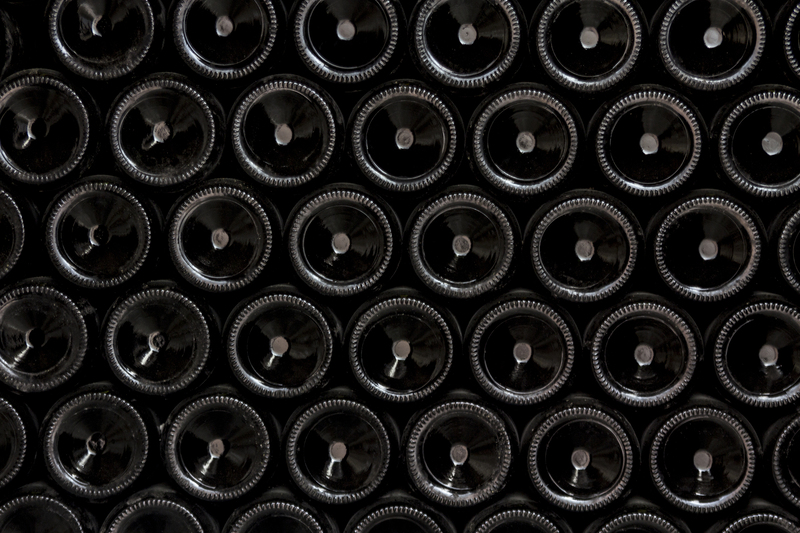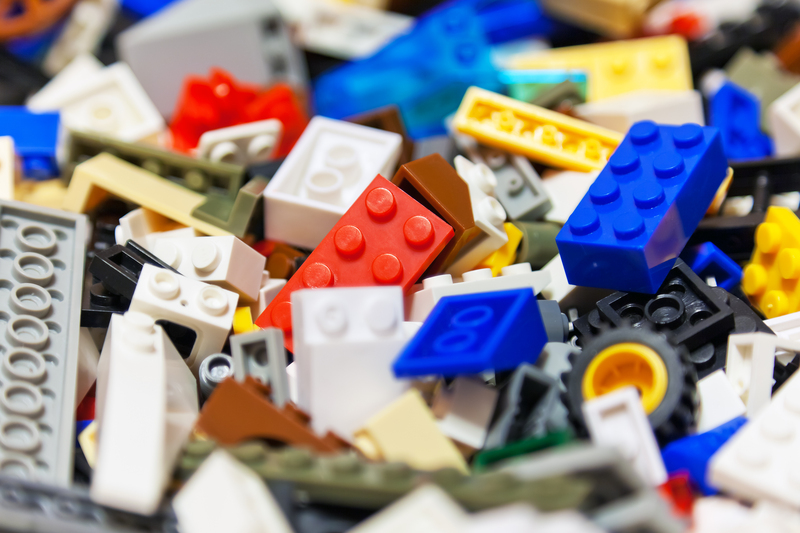Discover How to Simplify Packaging and Cardboard Disposal
In today's fast-paced and eco-conscious world, effective packaging solutions and efficient cardboard disposal have become more essential than ever. Businesses and households alike are searching for ways to reduce clutter, save time, and contribute to a sustainable environment through smart packaging and recycling methods. If you're looking to simplify packaging and cardboard disposal without compromising convenience or environmental responsibility, you've come to the right place.
Why Simplifying Packaging and Cardboard Disposal Matters
The explosion of e-commerce and retail has led to an unprecedented amount of packaging materials, especially cardboard, entering homes and workplaces. Unfortunately, improper management can cause significant environmental and logistical issues. Here's why focusing on streamlined cardboard disposal and packaging simplification is crucial:
- Environmental Impact: Cardboard makes up a significant proportion of municipal solid waste. Minimizing its use and ensuring proper recycling reduces landfill demands and conserves natural resources.
- Cost Savings: Efficient packaging and disposal minimize haulage charges and waste management fees for businesses and homeowners.
- Space Efficiency: Reducing bulk through thoughtful packaging designs and early breakdown of boxes helps keep living and working spaces tidy.
- Time Management: Simplified packaging and disposal routines save time when unpacking or discarding boxes.
Understanding Cardboard Disposal Challenges
Before you can optimize cardboard waste management, it's essential to understand the common challenges:
- Volume: Cardboard can be bulky and difficult to transport in large amounts without proper reduction techniques.
- Contamination: Soiled or mixed-material cardboards are harder to recycle, increasing landfill waste.
- Lack of Infrastructure: Not all areas offer convenient recycling or pickup services for cardboard materials.

Step-by-Step Guide: How to Simplify Packaging and Cardboard Disposal
Adopting a few strategic measures can significantly simplify your approach to packaging and cardboard disposal. Here's a comprehensive guide:
1. Choose Smart Packaging Solutions
- Minimalist Packaging: Whenever possible, select packaging that uses the least amount of materials. Companies can evaluate suppliers that offer products in right-sized packaging instead of oversized containers with excess cushioning.
- Reusable Packaging: Invest in reusable boxes or mailers, especially for recurring shipments. Some companies offer robust packaging solutions designed for multiple uses, reducing overall waste and disposal efforts.
- Eco-Friendly Packaging: Opt for packaging made from recycled materials or those that are easily recyclable themselves. Look for labels such as FSC-certified or 'made from recycled content.'
- Flatten Boxes Immediately: To simplify cardboard recycling, break down boxes as soon as they're empty. This reduces space and improves hauling efficiency.
2. Break Down Cardboard Efficiently
Flattening and breaking down your cardboard boxes is a pivotal step in simplifying disposal. Approach it systematically to save space and effort:
- Remove Tape and Labels: If possible, peel off plastic tapes, stickers, or shipping labels. This limits contamination and ensures your cardboard is more readily accepted by recycling centers.
- Flatten Boxes: Carefully cut open all seams with a box cutter or scissors, then flatten each box completely. Stack them together to minimize storage space.
- Segregate Soiled Cardboard: Separate any cardboard contaminated with food, liquids, or grease. Only clean, dry cardboard should go into recycling bins.
3. Set Up a Cardboard Recycling System at Home or Office
Clarity and accessibility are the keys to simpler recycling routines. If you regularly receive packages, whether at work or home, here's how to optimize your recycling process:
- Centralize Collection: Place a designated cardboard bin in an easily accessible spot. Make it clear to others in your household or workplace where flattened boxes should go.
- Post Instructions: For offices or multi-user spaces, post simple illustrated instructions for breaking down and sorting cardboard to reduce contamination.
- Schedule Regular Drop-Offs: Mark your calendar for weekly or bi-weekly visits to your local recycling center or arrange curbside pickups if available.
4. Leverage Community and Professional Services
If the volume of cardboard is too high, or you seek extra convenience, look into these options:
- Municipal Recycling Programs: Most cities offer curbside recycling for cardboard. Familiarize yourself with local rules--some require bundling or specific bin usage.
- Professional Haulers: Business or apartment complexes may benefit from hiring a professional recycling service that regularly collects, compresses, and removes large volumes.
- Drop-Off Locations: Some supermarkets, community centers, or recycling depots provide dedicated cardboard drop-off points. These are useful for those with irregular pickup schedules.
5. Eliminate Cardboard at the Source
The most effective way to reduce disposal challenges is to avoid unnecessary cardboard entirely:
- Buy in Bulk: Reduce packaging by purchasing goods in larger volumes, thus minimizing frequent, small shipments.
- Opt-out of Excess Packaging: When ordering online, look for options to reduce packaging or combine multiple items into one box.
- Encourage Supplier Responsibility: Request suppliers to use recyclable, minimal, or returnable packaging for shipments.
Creative Ideas for Cardboard Reuse
Before you send cardboard off for recycling, consider creative reuse opportunities:
- Storage Solutions: Repurpose sturdy boxes as organizers for toys, documents, seasonal items, or craft supplies.
- Gardening Mulch: Use flat cardboard as weed barrier beneath gravel, soil, or mulch in garden beds.
- DIY Projects for Kids: Cardboard can be transformed into forts, costumes, art canvases, or science projects.
- Pet Homes: Construct simple pet houses, scratching pads, or bedding areas for cats and small animals.
Common Mistakes to Avoid When Disposing of Cardboard
- Not Flattening Boxes: Leaving boxes unflattened takes up excess space, making bins overflow faster and reducing efficiency of pickup services.
- Mixing Wet with Dry Cardboard: Moisture damages fibers and renders cardboard unsuitable for recycling.
- Ignoring Contamination: Food residue, grease, or non-paper materials on cardboard can make entire batches non-recyclable.
- Overfilling Bins: Stuffing bins to the brim may result in rejected pickups or spillage.
Environmental Benefits of Efficient Cardboard Disposal
Choosing to simplify packaging and cardboard recycling brings remarkable advantages to our planet, including:
- Conservation of Trees: Recycling cardboard reduces the need to fell new trees for paper production.
- Energy Savings: Creating new cardboard from recycled material takes less energy compared to manufacturing from virgin pulp.
- Lower Greenhouse Emissions: Proper disposal and recycling cut down on methane emissions from landfills.
- Less Pollution: Efficient cardboard recycling helps reduce air and water pollution caused by traditional waste disposal processes.
Top Tips to Make Packaging and Cardboard Waste Management Easier
- Use Utility Knives: Invest in a sharp box cutter or scissors for quick, safe box breakdown.
- Keep a Recycling Bin Handy: Place recycling containers close to where you unpack boxes to streamline the process.
- Communicate: Train staff or instruct family members on best cardboard disposal practices.
- Monitor and Adjust: Evaluate cardboard waste habits regularly and look for areas to optimize further.
- Support Recycling Markets: Purchase products made with recycled content to close the recycling loop.
Technology's Role in Simplifying Cardboard Disposal
Modern technology is transforming how we manage packaging and recycle cardboard waste. Here's how innovations can further simplify packaging and cardboard management:
- Cardboard Compactors: For businesses generating high cardboard volumes, compactors compress waste, making storage and transport more efficient.
- Smart Bins: IoT-connected bins alert managers when full and track recycling rates, reducing overflow and missed collections.
- Recycling Apps: Digital applications offer reminders, instructions, and closest recycling drop-off locations, making it easier to stay on track.
- Eco-friendly Packaging Design: Software tools help designers create minimal, recyclable packaging that's easy to break down.
Conclusion: Start Simplifying Your Packaging and Cardboard Disposal Today
Whether you're an individual, family, small business, or major corporation, it's entirely possible to simplify packaging and cardboard disposal for the benefit of your space, wallet, and the environment. Thoughtful purchasing, diligent disposal habits, and embracing new technologies make a big difference. Start by assessing your current packaging routine, setting up a more efficient system, and sharing these easy-to-follow practices with others.
Make small, consistent changes today--and enjoy a cleaner, greener tomorrow.

Frequently Asked Questions About Simplifying Packaging and Cardboard Disposal
How can I tell if my cardboard is recyclable?
Most clean, dry cardboard can be recycled. Avoid recycling cardboard contaminated with food, grease, or wax coating.
Should I remove staples and tape before recycling cardboard?
It's best to remove as much tape and non-paper materials as possible. Staples are usually removed at recycling facilities but removing them when possible ensures purer material streams.
What should I do with large quantities of cardboard?
Flatten boxes and stack them neatly. For ongoing high volumes, consider a dedicated recycling service or use a compactor.
Can I compost cardboard?
Yes, you can compost untreated, non-glossy cardboard by shredding it and mixing it into your pile as a carbon-rich "brown" layer.